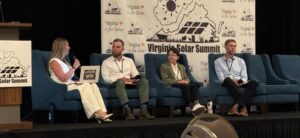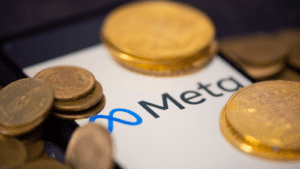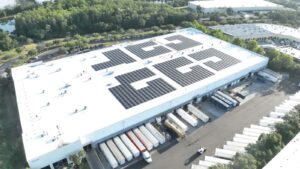We talk to a lot of people in your shoes—sustainability champions working inside complex organizations. You’ve gathered the data, maybe even brought on a consultant, and published your first report. But now you’re staring at a stack of ideas with no clear next step towards real sustainability implementation.
Sound familiar?
If you’re stuck between good intentions and actual implementation, you’re not alone. If you’re a team of one with competing priorities, we’re here to help you find solutions. Many teams we work with are facing the same challenge: how to turn momentum into movement.
Why the Momentum Stalls (And How to Push Through)
Most organizations we work with have already invested in some part of the process—audits, emissions inventories, maybe even setting reduction targets.
But implementation? That’s the cliff.
Here’s what typically causes the stall:
- Overwhelm: A flood of options with no clear priority
- Education gap: Teams struggle to connect sustainability goals to financial impact
- Misalignment: Leadership views it as compliance, not strategy
- Perfectionism: Waiting on the “perfect” plan before moving forward
ERM’s recent global survey of CFOs and CSOs confirms this: the urgency is acknowledged, but most organizations haven’t figured out how to align sustainability and financial strategy. That’s where the gap lives—and where your leadership matters.
The truth? The most progress we’ve seen comes from teams who start before they’re fully ready—and stay grounded in ROI, risk, and resilience. Many internal leaders feel overwhelmed by all the tasks on their plate. While momentum can feel slow, we’ve seen companies make real progress by allocating a few hours per week or month. By focusing on consistent, small steps, companies can have significant progress to show by the end of the year.
Why Acting Now Matters: Addressing the education and alignment gap
You already know sustainability isn’t a “nice to have.” But translating that urgency into business action? That’s where the breakdown often happens. Internal stakeholders that are unfamiliar with sustainability can sometimes overlook the financial benefits associated with a robust strategy.
Here’s why starting now matters:
- 30 U.S. states, plus D.C. and multiple territories, have active renewable energy requirements, while others are passing voluntary goals or GHG reduction legislation. Legislation includes fines for companies that do not comply.
- Climate volatility is impacting operations—from unpredictable energy pricing to facility disruptions. The Environmental Defense Fund found that the world’s largest corporations are exposed to nearly $1 trillion in risks from physical climate impacts and could face up to $250 billion in potential losses due to stranded assets.
- A study from the London School of Economics warns that in worst-case scenarios, up to 10% of global financial assets could be at risk by 2100 due to climate impacts.
- Prioritizing employees and supporting DEI initiatives drives stronger financial performance. Costco, for example, boasts a 93% employee retention rate—more than double the industry average of 40%—thanks to its employee-first culture. This helps avoid the steep costs of turnover, which can reach 16% of an employee’s annual salary, not including lost productivity and training expenses.
But beyond external risks and large scale examples, you’re probably seeing signs inside your organization too:
- Escalating utility bills
- RFPs with sustainability questions
- An emissions reduction target that needs progress
- Investor pressure for ESG disclosures and pressure to report
- A nagging question from leadership: “What are we actually doing?” Leadership is struggling to understand value and is questioning the business case
Sustainability can feel like an endless todo list. We’re here to help guide you from overwhelm to understanding. We can help you move from checking the compliance box to operational efficiency, risk reduction, and long-term resilience.
We’ve seen companies that devote time to sustainability start to see financial savings from reduced turnover or reduced electricity costs. Many companies start sustainability as a compliance exercise and then begin to track the dollar amount tied to RFPs or proposals that are asking sustainability questions.
Because sustainability provides so many benefits, how do you organize/prioritize correctly with limited time. We’re here to help you make the best use of limited time so that you realize the benefit.
Are We Making Progress—or Just Reporting?
Here’s a tough question we often ask teams: Is your report showing progress, or just summarizing what you hope to do someday?
The real wins come when sustainability becomes embedded in day-to-day operations. When it stops being “someone else’s initiative” and becomes part of the business DNA.
Here’s what helps bridge that gap:
- Frame your goals around outcomes that matter to leadership: cost savings, operational efficiency, talent retention.
- Align with the company’s long-term vision, not just near-term compliance.
- Track and share both environmental and financial wins.
- Start small, scale smart: One successful initiative can unlock leadership trust and funding.
Here are some statistics to help you make the case to leadership on how this can impact your operations.
| Item | Financial Benefit |
|---|---|
| Employee Turnover | Measuring and taking steps to reduce turnover saves money. Estimates say the cost of replacing an employee is 1–2× their salary. |
| Number of RFPs with sustainability questions | Per PwC, more than 4,000 companies reported through CDP in 2024. This is a ninefold increase in five years. |
| Tracking the number of RFPs with sustainability questions and their associated dollar amount helps prove to leadership the amount associated with having a strategy in place. | |
| Download to get the full list | |
You Don’t Have to Go It Alone
We’ve worked with dozens of sustainability teams across healthcare, manufacturing, logistics, and more. The challenges may vary, but the feelings are often the same: You’re passionate. You’re ready. And you’re tired of spinning your wheels.
Here’s what we’ve seen make a difference:
- Limited, consistent work can be the key to success
- We’ve seen teams that have internal committees and an external consultant accomplish the following in a year with 4-5 hours a month dedicated:
- SBTi submission
- Developing and implementing an employee volunteer program
- Scope 1 & 2 calculation
- Monthly steering committee meetings
- We’ve seen teams that have internal committees and an external consultant accomplish the following in a year with 4-5 hours a month dedicated:
For this organization, they tracked monthly tasks against annual goals and assigned work as required.
- Start with initiatives that offer quick wins and strong ROI
- Track RFPs that ask or mention sustainability
- Send out an employee engagement survey
- Calculate total utility costs for the prior year
- Evaluate no-capital solutions like PPAs for renewable energy and savings
- Use tools and frameworks to simplify complex decisions
- Need help understanding your material issues? For most companies, spend an afternoon doing the following:
- Look at SASB for your industry
- Check out what your competitors or the public companies in your industry are doing
- Check out which RFP questions are the most common
- Need help understanding your material issues? For most companies, spend an afternoon doing the following:
- Create a go-to network of consultants, developers, and partners who know your space
- Reach out to a counterpart at a competitor or industry partner that is already looking at this. Set up a call to discuss shared strategies
- Make a list of what you want to manage internally and what you might need external partners for. For many organizations, they outsource:
- Carbon footprint
- Renewable energy purchases
- Be bold when talking about risk—but clear when talking about results
Final Thoughts: You’re Not Just Checking Boxes—You’re Changing Business
Being in this role isn’t easy. You’re managing competing priorities, shifting regulations, and organizational inertia. But what you’re doing matters.
The good news? You don’t have to do it all at once—and you don’t have to do it alone.
Whether you need help building your business case, finding financing solutions, or developing a strategy you can actually execute, we’re here for the long haul. Our team is built to meet you where you are—and help you move forward.
Let’s talk about what your next step could look like.
Case Study
One organization we worked with discovered their utility costs were increasing by 15% annually. After conducting an energy audit, we helped them implement a phased rooftop solar program that lowered those costs by 20%. They used the savings to upgrade fleet vehicles and launch an employee engagement program focused on emissions reduction. That initiative became the internal proof point for more ambitious projects—and created momentum that stuck.
ESA partners with large corporate energy buyers to enable actionable projects. Through our Decarbonization as a Service model, ESA provides a comprehensive approach to decarbonization by enabling companies to implement on-site solar, virtual power purchase agreements (VPPAs) and community solar agreements without upfront capital expense. By shifting investments in sustainability projects from a cost center to an immediate operating savings, ESA’s clients meet carbon reduction targets while driving meaningful business performance.
Eliza Erskine works with private companies to develop and implement ESG strategies that reduce costs and drive revenue. Her work includes climate strategies, carbon accounting, and holistic sustainability. Learn more here.











